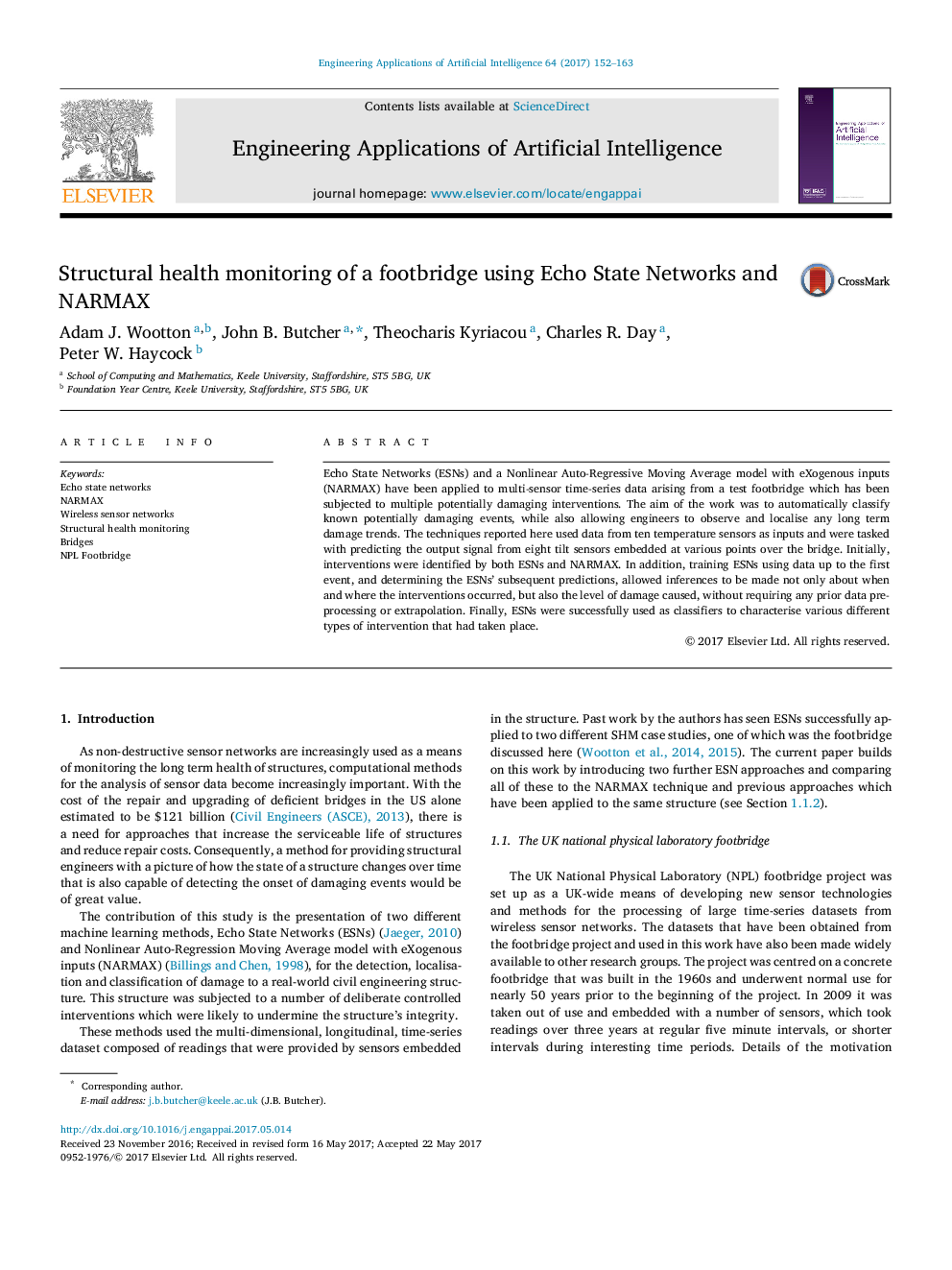| Article ID | Journal | Published Year | Pages | File Type |
|---|---|---|---|---|
| 4942652 | Engineering Applications of Artificial Intelligence | 2017 | 12 Pages |
Abstract
Echo State Networks (ESNs) and a Nonlinear Auto-Regressive Moving Average model with eXogenous inputs (NARMAX) have been applied to multi-sensor time-series data arising from a test footbridge which has been subjected to multiple potentially damaging interventions. The aim of the work was to automatically classify known potentially damaging events, while also allowing engineers to observe and localise any long term damage trends. The techniques reported here used data from ten temperature sensors as inputs and were tasked with predicting the output signal from eight tilt sensors embedded at various points over the bridge. Initially, interventions were identified by both ESNs and NARMAX. In addition, training ESNs using data up to the first event, and determining the ESNs' subsequent predictions, allowed inferences to be made not only about when and where the interventions occurred, but also the level of damage caused, without requiring any prior data pre-processing or extrapolation. Finally, ESNs were successfully used as classifiers to characterise various different types of intervention that had taken place.
Related Topics
Physical Sciences and Engineering
Computer Science
Artificial Intelligence
Authors
Adam J. Wootton, John B. Butcher, Theocharis Kyriacou, Charles R. Day, Peter W. Haycock,
